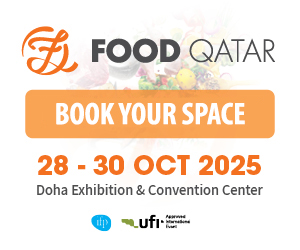Oman is making strong strides toward food security, driven by strategic investments, technological innovation, and sector-wide reforms. By optimizing its 1.4 million hectares of agricultural land, the Sultanate is boosting productivity and reinforcing both its economic resilience and self-sufficiency.
According to the Oman Investment Authority (OIA), the agriculture, fisheries, and forestry sectors recorded a 9.8% year-on-year GDP growth in 2023, reaching approximately $2.51 billion (OMR 966.4 million). The momentum continued in the first half of 2024, with the sectors generating around $1.38 billion (OMR 529.5 million), highlighting robust and sustained expansion in Oman’s food economy.
At the center of this transformation is Oman Food Capital—a newly consolidated entity formed from the merger of Oman Food Investment Holding Company (Nitaj) and Fisheries Development Oman (FDO). Managing assets worth over $2.6 billion (OMR 1 billion), Oman Food Capital oversees a broad portfolio spanning aquaculture, poultry, red meat, dairy, fruits and vegetables, food processing, animal feed, cold chain logistics, agri-tech, and R&D.
In collaboration with the Ministry of Agriculture, Fisheries and Water Resources, these investments are contributing to sharp improvements in food self-sufficiency across major categories, according to data compiled by the Oxford Business Group.
Key Gains in 2024 Food Self-Sufficiency Indicators:
Fish: Increased from 151% in 2023 to 162% in 2024, reinforcing Oman’s marine production and export strength.
Fresh Milk: Rose from 88% to 97%, highlighting gains in dairy production and supply chain efficiency.
Table Eggs: Jumped from 59% to 92% due to expanded poultry farming and improved techniques.
Fruits: More than doubled from 26% to 57%, reflecting better cultivation and seasonal yields.
Red Meat: Edged up from 44% to 46%, showing gradual progress in livestock farming.
Declines:
Vegetables: Dropped from 77% to 60%, mainly due to capacity and seasonal challenges.
Poultry Meat: Fell from 61% to 55%, indicating a need for further investment.
Despite these declines, Oman’s food security outlook remains positive. The fisheries sector in particular is a cornerstone of economic diversification, with production reaching 748,000 tonnes in 2022, valued at $1.2 billion, and exports increasing 23.7% to $362 million, cementing Oman’s role as a regional and global leader in sustainable aquaculture.
In 2024, Oman launched 89 new investment projects across agriculture and fisheries, covering over 9 million square meters, including:
70 agricultural ventures
10 livestock initiatives
7 water-related projects
2 fisheries developments
All projects mandate a minimum 30% Omani or GCC ownership, in line with Oman’s strategy to promote private sector involvement and ensure long-term sustainability.
Looking ahead, the sector aims to attract $1.2 billion in new investment by 2025, creating 8,500 jobs. Key initiatives include integrated aquaculture farms, artisanal fishery projects, and other ventures supported by Oman’s strategic location and robust logistics infrastructure—positioning the Sultanate as an emerging regional food distribution hub.
The Oxford Business Group concluded that Oman’s approach—rooted in innovation, infrastructure, and global standards—is successfully transforming the agri-food sector into a globally competitive industry.
Source: Oman Observer











































































